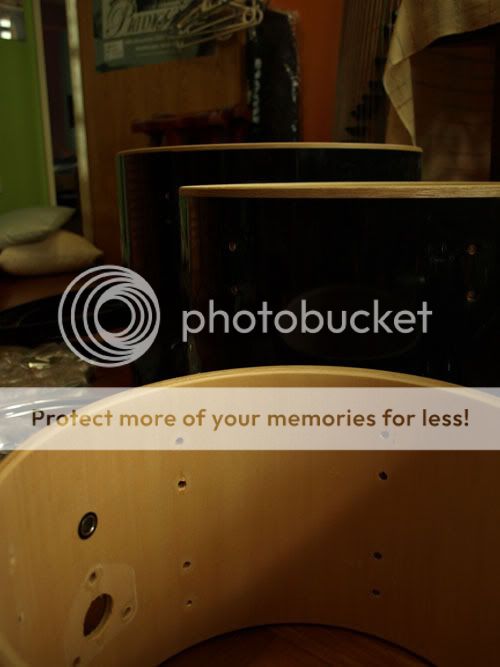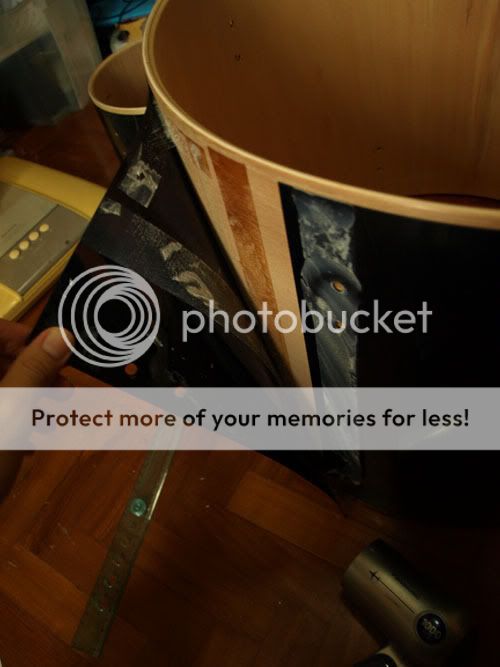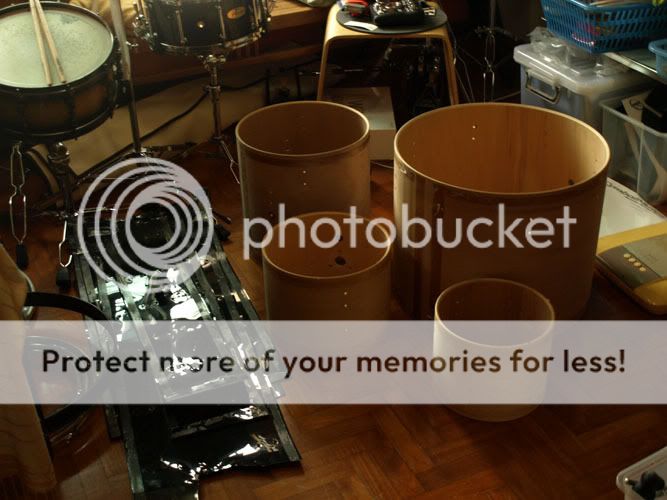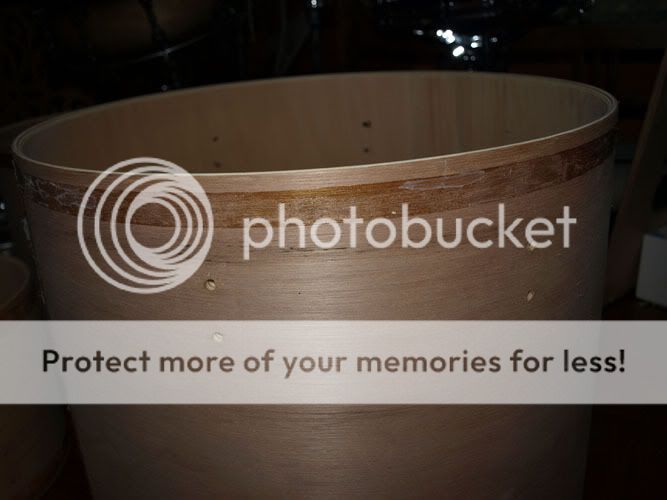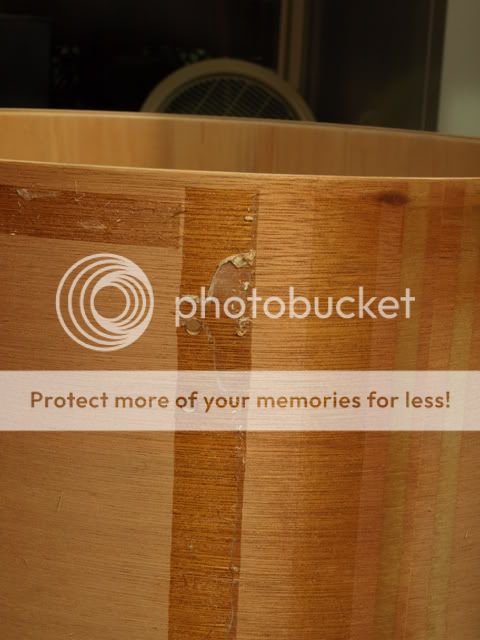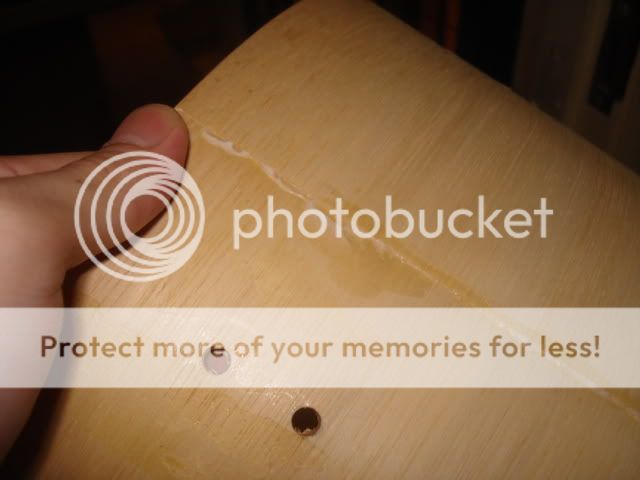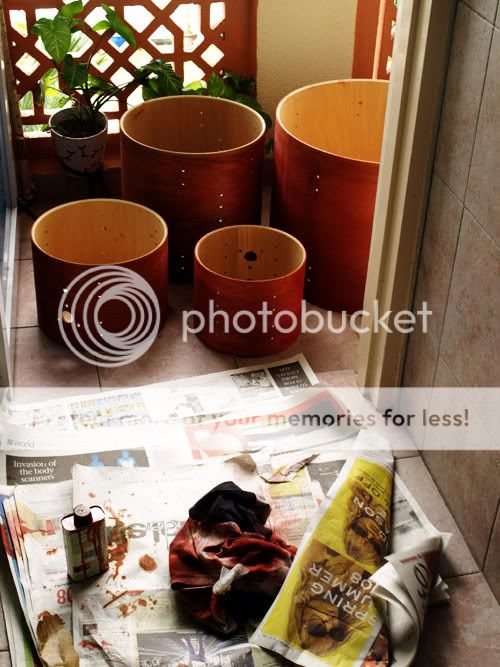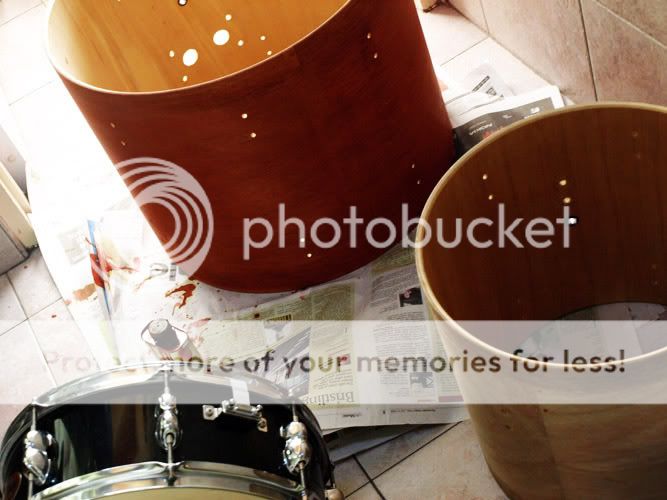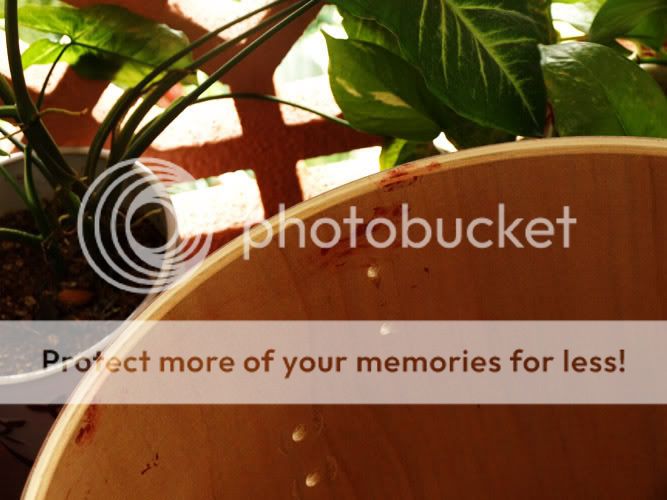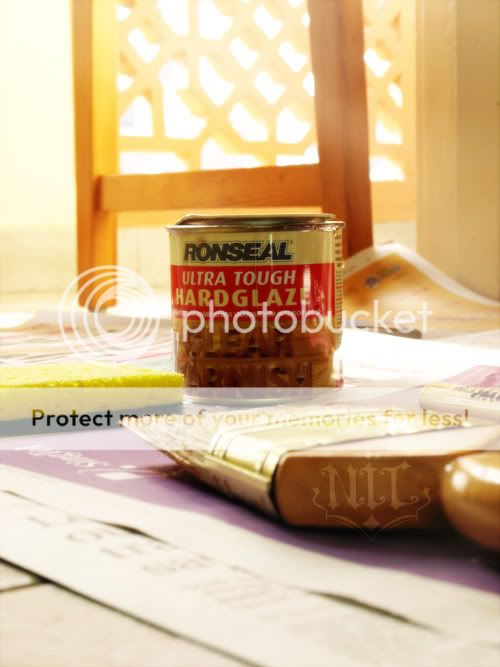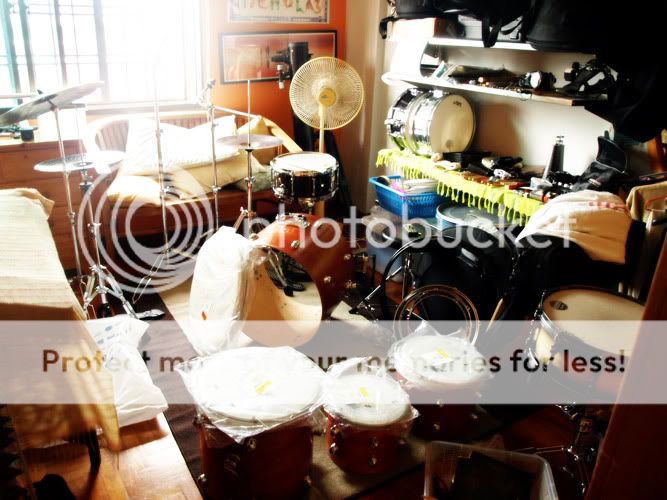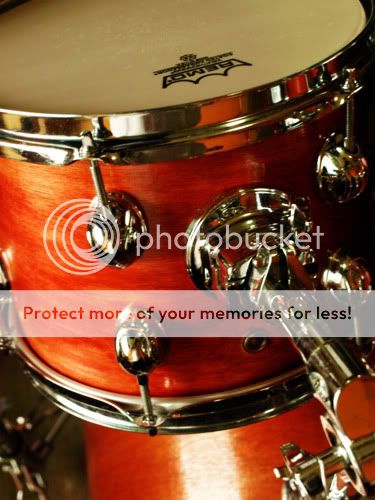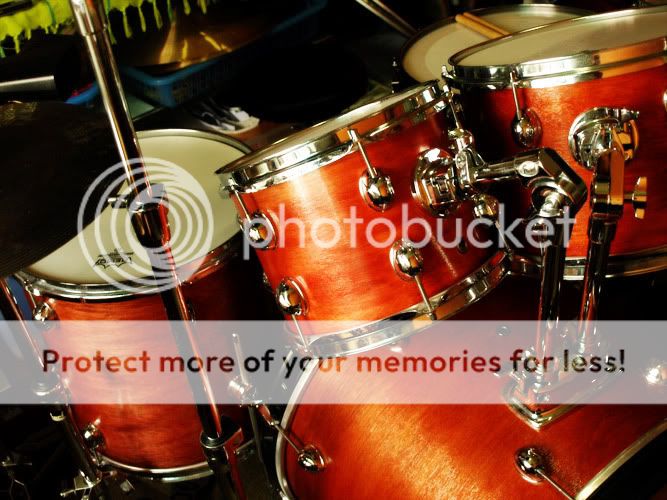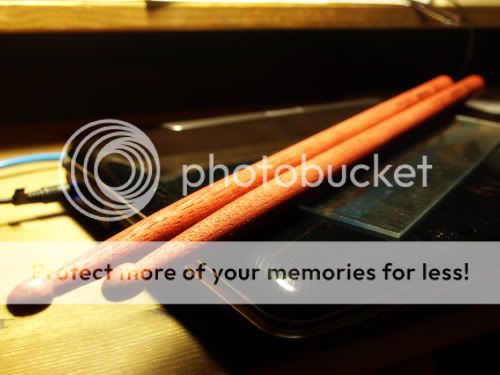Composer of Requiems
New member
Okay I figure that some people might be interested to see how I did this... so I'm posting this into a thread here. Posting into a few posts because of number of image restrictions.
I got inspiration to do this from pearldrummersforum.com; I saw a lot of people there (mostly westerners I think) doing a lot of DIY with their own drums. So some time back, because my school became less busy for a while, I set aside some time to refinish my Pearl Target drumset. It looks a lot better after I replaced the "piano black" wrap with lacquered red wood.
Throughout, BE VERY CAREFUL not to damage your drums. The wood is strong but it only takes a little bit of chipping to damage it. Most especially, the "bearing edges". This is the part of the shell that actually touches the drumskin (the top and bottom rims of the shell) so it's very important. Always be careful with them. You might want to put the drums on a soft surface; I did everything on thick layers of old newspaper so it protected both the floor and the drum.
You'll need to prepare:
1) Sandpaper, in various grades of roughness
2) Thinner or something else to remove glue
3) Rust remover, metal polish (if required)
4) Wood dye (or wood stain or paint, but I think dye is better)
5) Lacquer/clearcoat/polishing oil
6) Cloth (rags) and paintbrush (preferably very large, makes your job easier)
7) Hair dryer or something else that can shoot hit air
8) Something sharp and thin, e.g. ruler or something
9) Screwdrivers, drum keys, etc. to take apart the drums
10) Something to cover the floor (it will be messy)
11) Something to cover yourself (especially your hands, trust me on this)
Dismantling drumset
First thing to do, of course, is take apart your drumset.
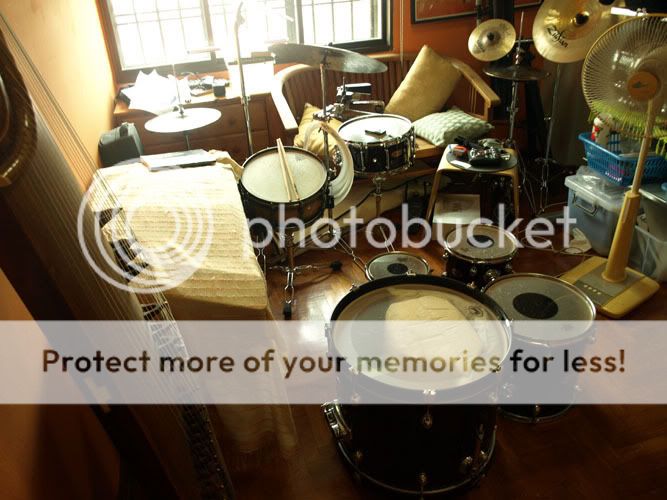
Remove all the hardware. It's surprising that the hardware is possibly HEAVIER than the drums. Picking up the drumshell is surprisingly light.
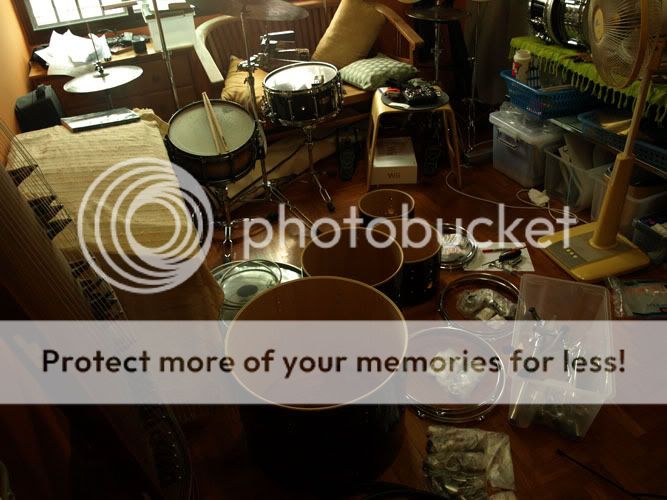
You may have to polish off any rust or stains that the hardware has. Trust me, don't ever let your drumset get horribly dirty, it's a pain in the ass to clean up.
I got inspiration to do this from pearldrummersforum.com; I saw a lot of people there (mostly westerners I think) doing a lot of DIY with their own drums. So some time back, because my school became less busy for a while, I set aside some time to refinish my Pearl Target drumset. It looks a lot better after I replaced the "piano black" wrap with lacquered red wood.
Throughout, BE VERY CAREFUL not to damage your drums. The wood is strong but it only takes a little bit of chipping to damage it. Most especially, the "bearing edges". This is the part of the shell that actually touches the drumskin (the top and bottom rims of the shell) so it's very important. Always be careful with them. You might want to put the drums on a soft surface; I did everything on thick layers of old newspaper so it protected both the floor and the drum.
You'll need to prepare:
1) Sandpaper, in various grades of roughness
2) Thinner or something else to remove glue
3) Rust remover, metal polish (if required)
4) Wood dye (or wood stain or paint, but I think dye is better)
5) Lacquer/clearcoat/polishing oil
6) Cloth (rags) and paintbrush (preferably very large, makes your job easier)
7) Hair dryer or something else that can shoot hit air
8) Something sharp and thin, e.g. ruler or something
9) Screwdrivers, drum keys, etc. to take apart the drums
10) Something to cover the floor (it will be messy)
11) Something to cover yourself (especially your hands, trust me on this)
Dismantling drumset
First thing to do, of course, is take apart your drumset.

Remove all the hardware. It's surprising that the hardware is possibly HEAVIER than the drums. Picking up the drumshell is surprisingly light.

You may have to polish off any rust or stains that the hardware has. Trust me, don't ever let your drumset get horribly dirty, it's a pain in the ass to clean up.
Last edited by a moderator:

